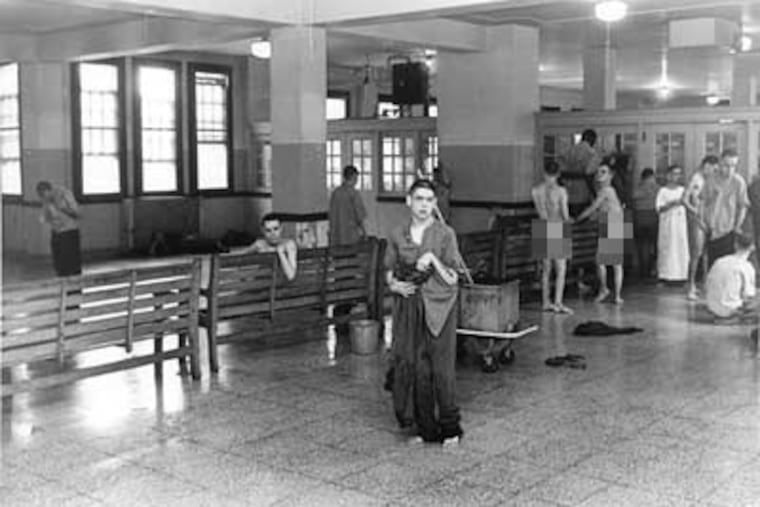Remembering a Pennhurst survivor who became ‘the MLK of the disability rights movement’
After his release from the notorious institution, Roland Johnson became a renowned intellectual disabilities advocate. It is time for his story to be better known.

Roland Johnson was an unlikely hero who played a pivotal role in the long struggle for disability rights and freedom in Pennsylvania and America.
He overcame a life of hardship, abandonment, and discrimination to become a national leader and spokesman for people with an intellectual or developmental disability. Though virtually dismissed as a person of little or no consequence, Johnson triumphed over torment and tribulation to help create a world of better possibilities for hundreds of thousands of institutionalized fellow citizens who were marginalized and consigned to the ash can of history and public memory.
All of Philadelphia should celebrate this native son on the 30th anniversary of his death on Aug. 29.
Born into a large African American family with roots in working-class South Philadelphia, as a young child Johnson moved with his family to North Cleveland Street. In adolescence, Johnson began to display increasingly troubling behaviors and habitual truancy. He was assessed as unsuitable for public school. Uncertain of how to manage their son’s defiance, Johnson’s parents took him to several physicians, who recommended he be institutionalized immediately at the notorious Pennhurst State School and Hospital.
As Johnson explained in his self-published autobiography, Lost in a Desert World (1994), he was only 12 when admitted in 1958, and he would spend nearly 15 years in custodial incarceration before his final discharge in 1973.
When he first saw the sprawling 1,200-acre compound, complete with a dairy farm and agricultural fields and more than 3,500 residents, he started to cry. As an “inmate,” Johnson’s official records bore the patient number 9134, and with an IQ assessed at 53, he was one of the so-called working boys assigned to labor in the cafeteria, or one of the several shops or fields.
To say Johnson had difficulty with the rigid routine would be an understatement. A 1959 Pennhurst assessment described him as “abusive, destructive, and defiant.” “Sneaky and surly,” stated another.
While at Pennhurst, Johnson not only witnessed but experienced neglect, mistreatment, and corporal punishment for his noncompliance.
Once extolled as a model institution, Pennhurst became a nightmarish place for Johnson and others who were kept there.
Disability advocates Ginny Thornburgh, Pat Clapp, and Eleanor Elkin found upwards of 60 residents in dayrooms, many in soiled garments, wandering about with no direction or purposeful activities; infants were left manacled to their cribs and severely malnourished. Nighttime was the worst, Johnson recalled in his book, with few guards on duty and predators free to roam the halls at will.
The trauma would haunt him long after Pennhurst officially closed in 1987. But what is remarkable about Johnson’s story is the personal transformation he went through following his release in June 1973.
With the assistance of dedicated mentors, Johnson evolved into a prophetic public speaker and self-advocate for people with intellectual or developmental disabilities. The once shy and awkward cast-off championed closing state-run institutions for the disabled. His experiences at Pennhurst gave Johnson a depth of insight into the problems of institutionalization, and an authority and authenticity that was recognized by leaders of the disability rights and civil rights movements.
As he assumed leadership roles in Speaking for Ourselves and other self-advocacy groups, Johnson traveled across America, and to Canada and England. During the 1980s and 1990s, he spoke at conferences, workshops, and on college campuses. Several times he delivered testimony to government hearings and commissions. Johnson impressed the likes of Presidents George H.W. Bush and Bill Clinton. And in July 1990, he stood with several hundred invited guests in the White House Rose Garden as Bush signed the Americans with Disabilities Act, one of the great bipartisan civil rights statutes of our time.
» READ MORE: Remembering ‘Suffer the Little Children’ and Pennhurst’s problematic history | Opinion
Johnson’s message was clear, and so, too, is his legacy: Every person has rights and deserves respect. When Johnson asked his audiences during speeches, “Who is in control?” he was not just challenging the lack of autonomy individuals with disabilities experience. He was affirming the inherent dignity of all human beings and their right to live free and meaningful lives.
After he shared with audiences in 1994 that he had been diagnosed with AIDS, he enlarged his advocacy to include that group of marginalized citizens. His square is a part of the National AIDS Memorial Quilt.
As the leader of a grassroots movement for systemic change, Johnson has been called the Rev. Dr. Martin Luther King Jr. of the disability rights movement. But there are no statues of him, and few people know his story.
It is time to expand our national narrative to include Johnson.
What better way is there for politicians and the public to honor his memory than to embrace a more inclusive activism and respect for people with disabilities as fellow citizens with equal rights and opportunities?
Dennis Downey is a past president of the Pennsylvania Historical Association and the author/editor of 10 books, including “Pennhurst and the Struggle for Disability Rights” and the award-winning volume “Exploring Disability History in Pennsylvania.”